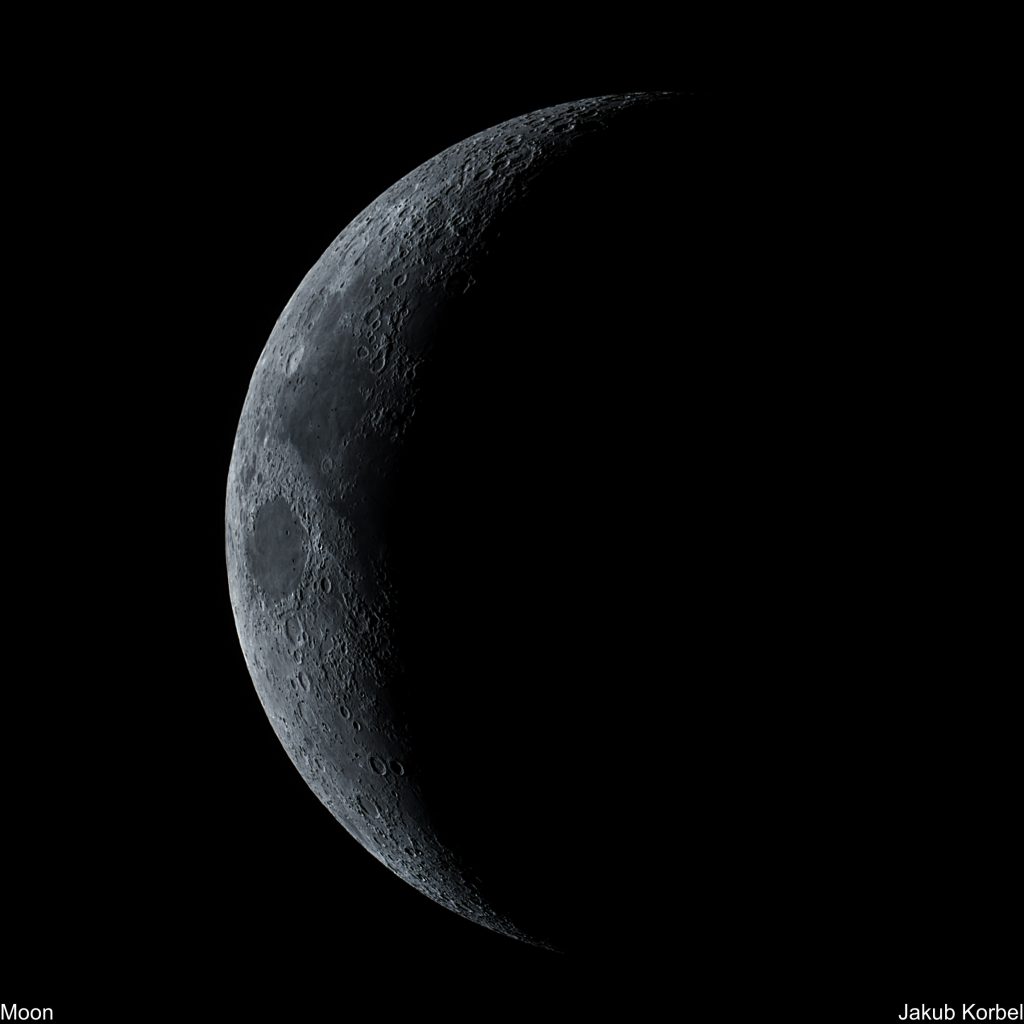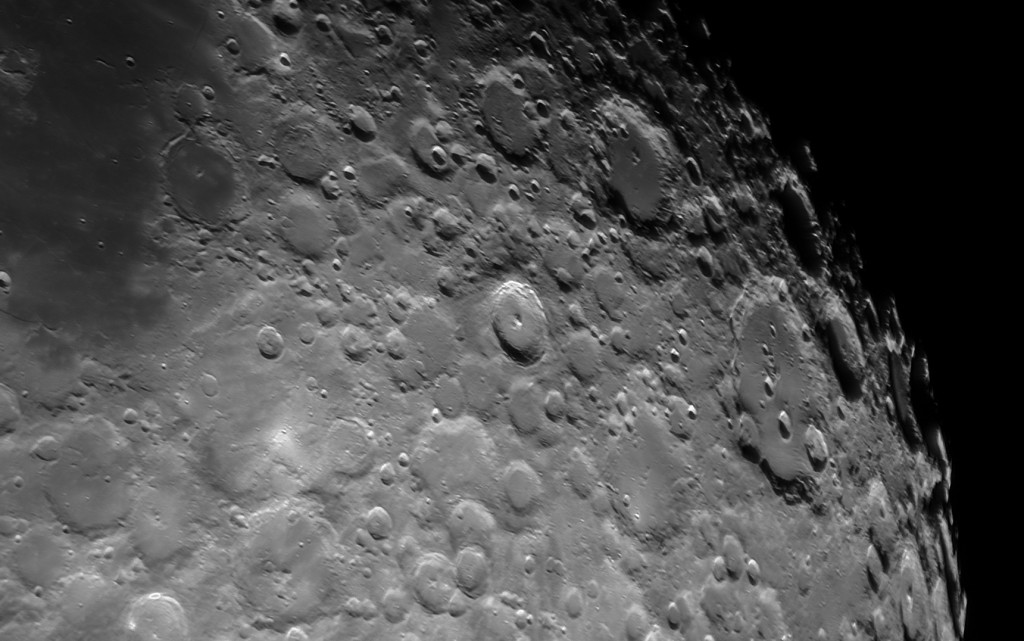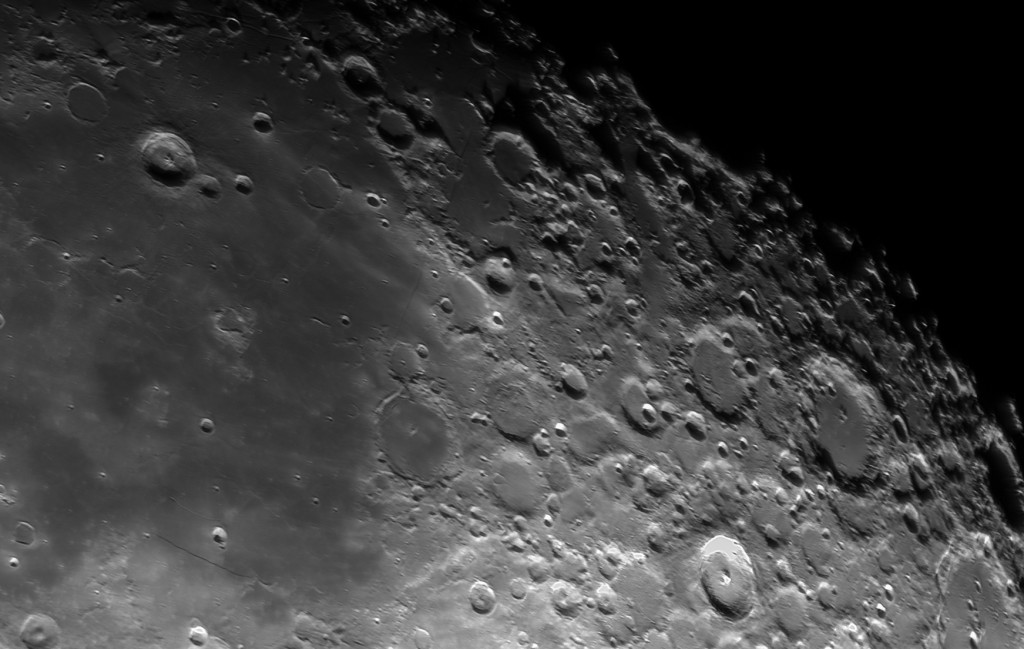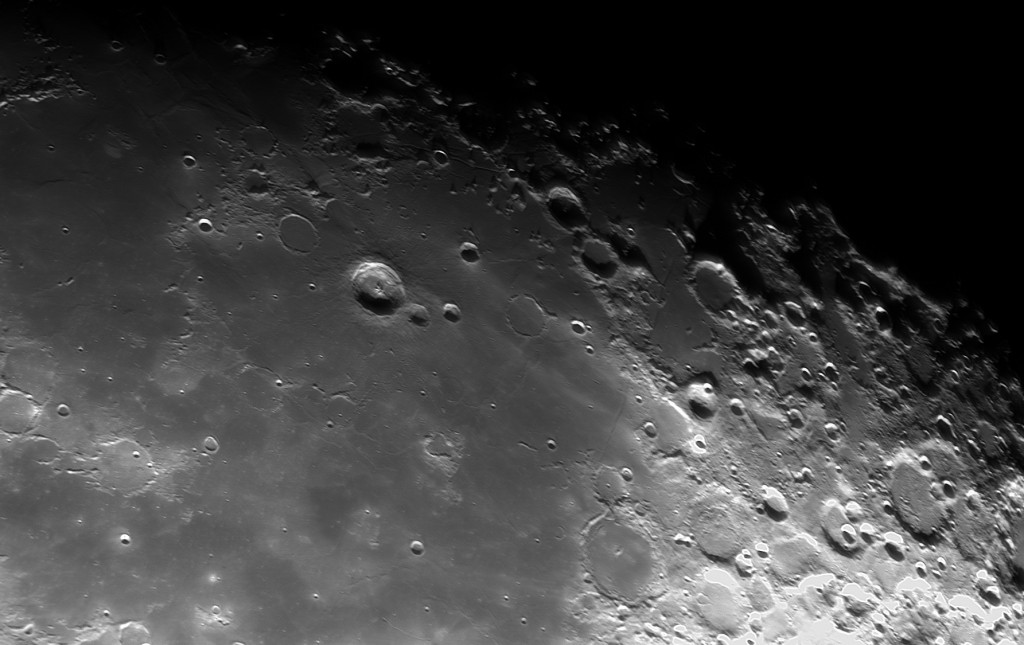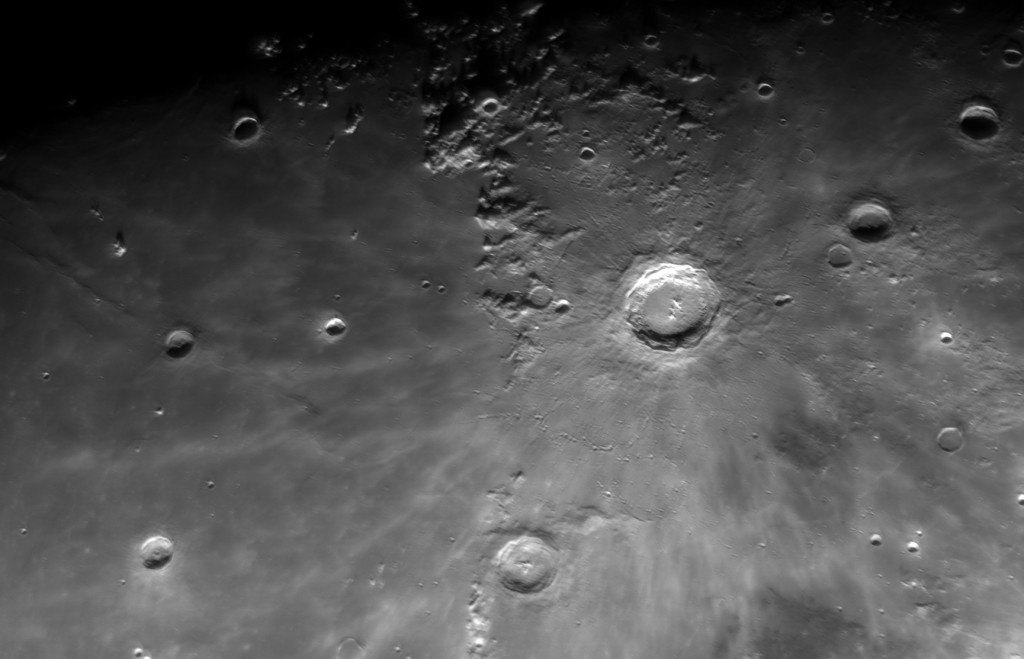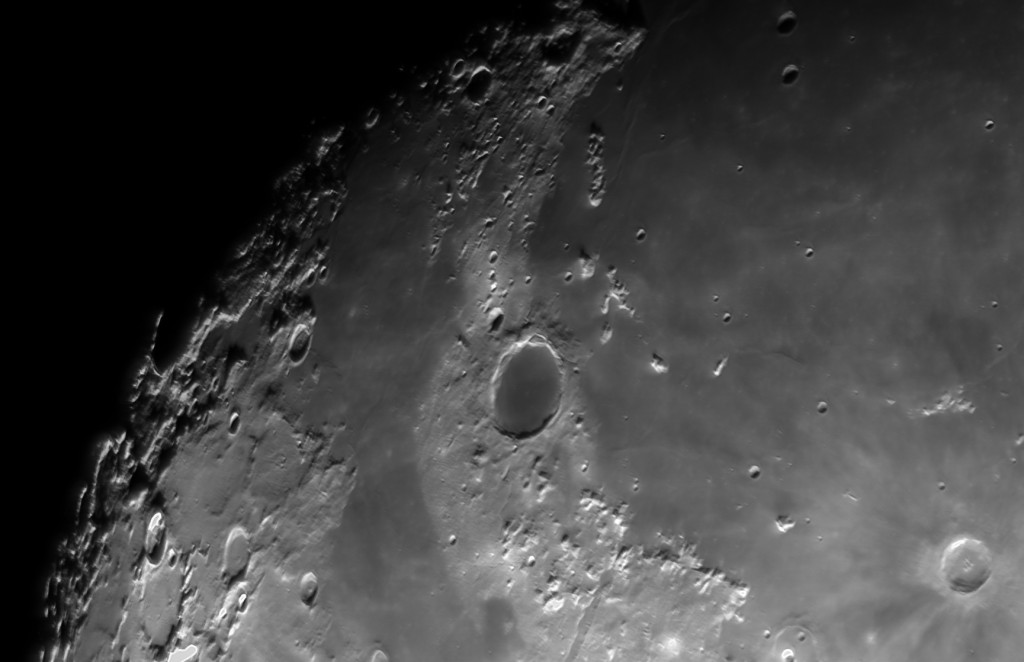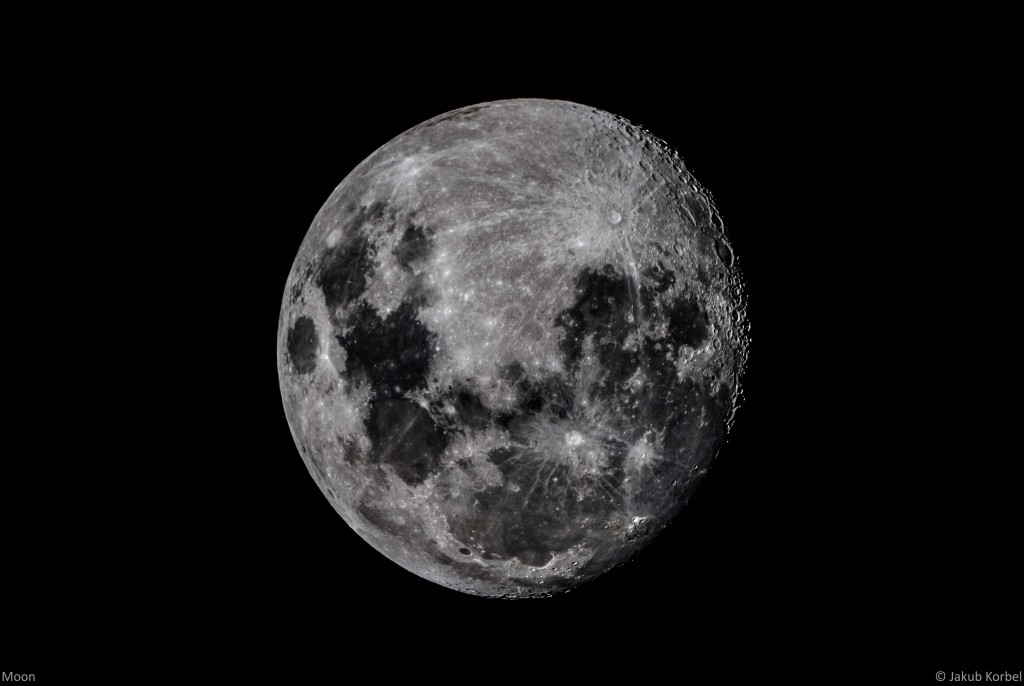After long period of bad weather, I had the opportunity to take the telescope out and enjoy the clear skies. In the early evening, waxing crescent was setting down, so I took the opportunity and pointed my newton on the Moon. The illumination was only 34%, which means that as soon it gets dark, the Moon is not far from horizon and you have to capture it through thick layer of turbulent atmosphere. The picture is a stack of 700 frames.
Technical details
| Telescope: | Newton 254/1000 mm |
| Aperture: | 254 mm |
| Focal length: | 1000 mm |
| Mount | Gemini G53f |
| Autoguiding | - |
| Camera: | ZWO ASI 071 |
| Corrector: | GPU coma corrector |
| Filters: | UV IR cut 2" |
| Exposure:8x | 1000 frames, best 700 selected |
| Date: | 2018-03-21 |

